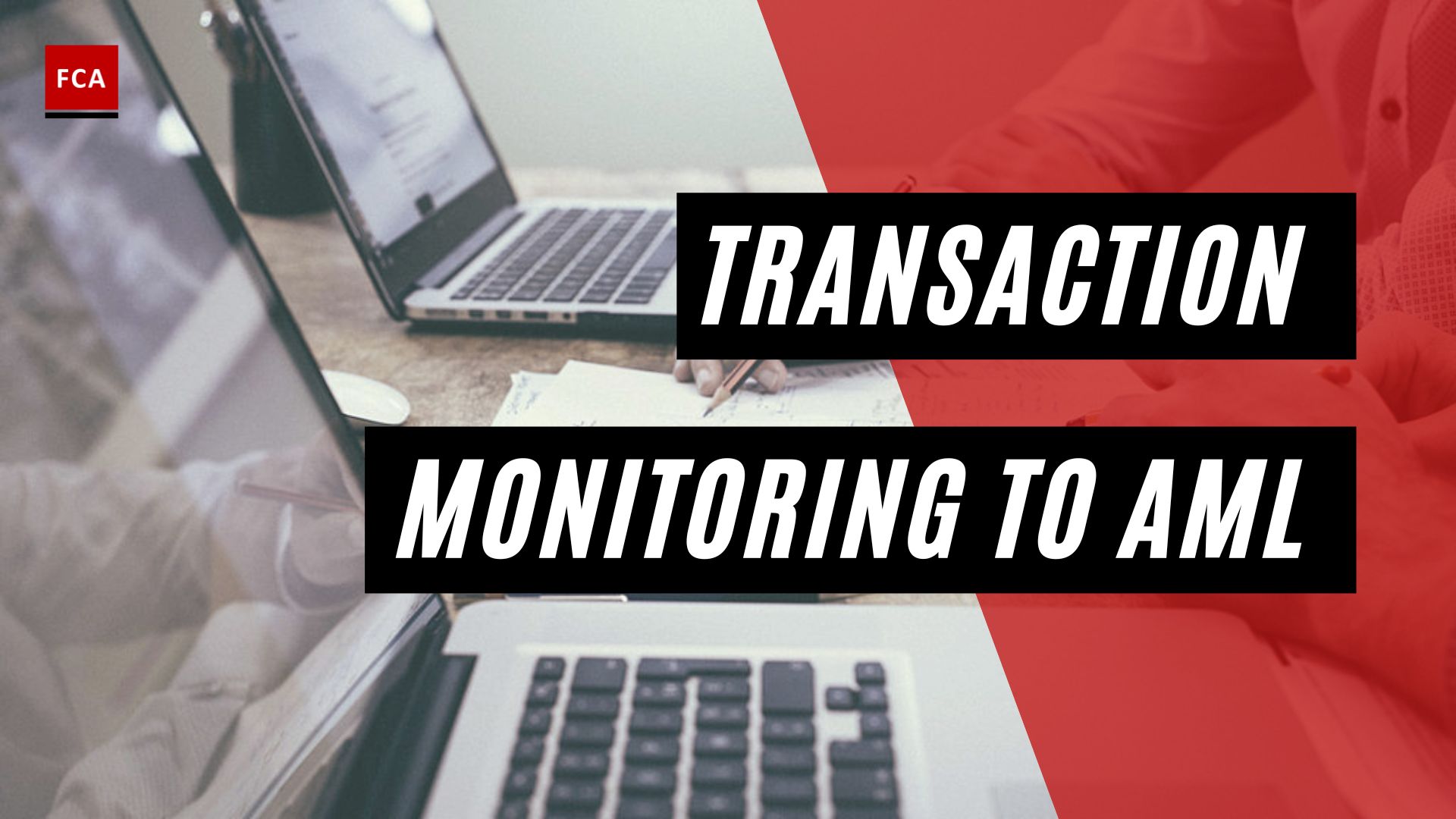Understanding AML Regulatory Requirements
To effectively combat financial crimes such as money laundering and terrorism financing, it is crucial to understand and adhere to Anti-Money Laundering (AML) regulatory requirements. AML compliance plays a vital role in safeguarding the integrity of the financial system and protecting institutions against illicit activities. This section provides an introduction to AML compliance and highlights the importance of AML regulations.
Introduction to AML Compliance
AML compliance refers to the processes and measures implemented by financial institutions to prevent, detect, and report money laundering and other illicit activities. In the United States, AML regulatory requirements are governed by the Bank Secrecy Act (BSA) and the USA PATRIOT Act, with regulations from the Financial Crimes Enforcement Network (FinCEN) playing a crucial role in shaping AML compliance obligations (Investopedia). These regulations impose strict compliance obligations on financial institutions, including banks, credit unions, and other entities involved in financial services.
Financial institutions are required to establish robust AML compliance programs that encompass various elements, such as the development of internal policies, procedures, and controls, designation of an AML compliance officer, ongoing training for employees, and independent audits to test programs (Investopedia). These programs are designed to ensure that institutions have adequate measures in place to identify and mitigate the risks associated with money laundering, terrorist financing, and other financial crimes.
Importance of AML Regulations
AML regulations are of paramount importance in the fight against financial crimes. They serve as a deterrent to criminals seeking to exploit the financial system for illicit purposes. By imposing stringent compliance obligations, AML regulations strive to create a secure and transparent financial environment.
Non-compliance with AML regulatory requirements can have severe consequences for financial institutions. Institutions that fail to meet these requirements may face significant fines, legal action, and the risk of losing their licenses to operate (Financial Crime Academy). Penalties for non-compliance can range from thousands to billions of dollars, depending on the severity of the violations (Financial Crime Academy). These penalties not only have a financial impact but also tarnish the reputation of the institution, eroding customer trust and potentially causing long-term harm to their business operations (Financial Crime Academy).
Regulatory enforcement actions are another consequence of non-compliance with AML regulations. Regulatory authorities conduct thorough examinations and investigations to ensure that financial institutions are effectively implementing AML compliance programs and meeting regulatory requirements. These actions are aimed at enhancing the integrity of the financial system and ensuring that institutions adhere to their obligations in combating money laundering and terrorist financing activities (Financial Crime Academy).
In summary, understanding and adhering to AML regulatory requirements are essential for financial institutions in their efforts to prevent financial crimes and maintain the integrity of the financial system. AML compliance programs, supported by robust internal controls, ongoing training, and independent audits, are instrumental in meeting these requirements and safeguarding institutions from the severe consequences of non-compliance.
Key AML Regulatory Requirements
To effectively combat money laundering and other financial crimes, understanding and adhering to the key anti-money laundering (AML) regulatory requirements is essential. This section provides an overview of the main requirements that organizations must comply with to prevent illicit activities.
Overview of AML Laws and Acts
AML regulatory requirements are becoming increasingly stringent globally, with stricter regulations being introduced in various countries to combat financial crimes such as money laundering and terrorism financing (Financial Crime Academy). In the United States, AML regulatory requirements are governed by the Bank Secrecy Act (BSA) and the USA PATRIOT Act, along with regulations from the Financial Crimes Enforcement Network (FinCEN).
These regulatory frameworks impose strict compliance obligations on financial institutions, including banks, to prevent and detect money laundering activities. Organizations must establish robust AML compliance programs that include policies, procedures, and controls to ensure adherence to AML regulations and mitigate the risks associated with financial crimes.
Customer Due Diligence (CDD) Requirements
One of the fundamental AML regulatory requirements is conducting thorough customer due diligence (CDD). Financial institutions are required to verify the identities of their customers, understand the nature of their business relationships, and assess the potential risk of money laundering or terrorist financing.
CDD requirements involve obtaining and verifying customer identification information, such as name, address, date of birth, and identification documents. The level of due diligence applied may vary based on the risk profile of the customer, their business activities, and the products or services they seek.
Financial institutions must also monitor and update customer information periodically to ensure ongoing compliance with AML regulations. This includes conducting enhanced due diligence (EDD) for high-risk customers, such as politically exposed persons (PEPs) or those engaged in high-value transactions.
Monitoring and Reporting Obligations
AML regulatory requirements mandate that financial institutions establish effective monitoring and reporting mechanisms to detect and report suspicious activities. Organizations must implement transaction monitoring systems that analyze customer transactions and identify any unusual or suspicious patterns that may indicate potential money laundering or terrorist financing activities.
When suspicious transactions or activities are identified, financial institutions are obligated to file suspicious activity reports (SARs) with the relevant authorities. SARs provide detailed information about the suspicious activity, enabling law enforcement agencies to investigate and take appropriate action.
In addition to SARs, financial institutions may also be required to report large cash transactions, international fund transfers, or other specified transactions as per local regulations.
By adhering to these monitoring and reporting obligations, organizations contribute to the global effort to combat money laundering and protect the integrity of the financial system.
Understanding and complying with these key AML regulatory requirements is crucial for organizations operating in the financial sector. Failure to comply can result in severe consequences, including penalties, fines, reputational damage, loss of trust, and regulatory enforcement actions. To ensure compliance, financial institutions often leverage advanced AML compliance solutions and tools, such as automated KYC and transaction monitoring systems, to enhance their AML programs and mitigate risks.
For more information on AML regulatory compliance, organizations can refer to resources provided by regulatory bodies like the FDIC and FINRA, as well as access compliance platforms and tools tailored to meet their specific needs.
Consequences of Non-Compliance with AML Regulations
When it comes to Anti-Money Laundering (AML) compliance, failing to meet regulatory requirements can have severe consequences for financial institutions and professionals working in compliance, risk management, anti-money laundering, and anti-financial crime. It is essential to understand the potential penalties and risks associated with non-compliance to ensure adherence to AML regulations.
Penalties and Fines for Non-Compliance
Non-compliance with AML regulatory requirements can result in significant fines and penalties for financial institutions. The fines can range from thousands to billions of dollars, depending on the severity of the non-compliance. For example, the Financial Conduct Authority (FCA) in the UK fined Standard Chartered Bank over £102 million for AML breaches, including inadequate AML controls and failure to monitor customers to prevent money laundering. In another case, Deutsche Bank faced a £163 million fine from the FCA and New York’s Department of Financial Services for AML failings. These examples demonstrate the substantial financial impact non-compliance can have on institutions.
Reputational Damage and Loss of Trust
Non-compliance with AML regulations can also lead to reputational damage for financial institutions. Public knowledge of AML breaches can erode customer trust and confidence in the institution, potentially causing long-term harm to its business operations. Rebuilding a damaged reputation can be a challenging and time-consuming process, with potential impacts on customer acquisition, retention, and overall business growth.
Regulatory Enforcement Actions
Regulatory enforcement actions are another consequence of non-compliance with AML regulations. Regulatory bodies have the authority to take various actions against financial institutions, including issuing formal warnings, imposing sanctions, restricting business activities, or revoking licenses. These actions can have significant implications for the institution’s operations and future prospects.
To mitigate the risks associated with non-compliance, financial institutions must prioritize AML compliance efforts. This includes establishing robust AML compliance programs, conducting regular AML audits, implementing effective AML due diligence processes, and adopting comprehensive AML risk management strategies.
By staying up to date with AML regulatory requirements and investing in appropriate AML compliance solutions and tools, financial institutions can minimize the risk of non-compliance and its associated consequences. Leveraging automated KYC (Know Your Customer) and transaction monitoring systems can enhance efficiency and accuracy in detecting and reporting suspicious activities, ensuring compliance with AML regulations.
It is crucial for professionals working in the anti-financial crime field to stay informed about AML regulatory requirements and the potential consequences of non-compliance. By maintaining a strong compliance culture and adopting proactive measures, financial institutions can navigate the complex landscape of AML regulations and protect themselves from the severe penalties and reputational damage that non-compliance can bring.
AML Compliance Solutions and Tools
To effectively meet AML regulatory requirements, anti-financial crime professionals rely on various solutions and tools that leverage technology to streamline compliance processes. These tools play a crucial role in assisting organizations in identifying and preventing money laundering and other illicit activities. In this section, we will explore the role of technology in AML compliance, leading AML software providers, and the benefits of leveraging automated KYC and transaction monitoring.
Role of Technology in AML Compliance
Technology has revolutionized the way AML compliance is approached, enabling organizations to enhance their capabilities and improve efficiency in tackling financial crime. AML compliance solutions leverage advanced technologies such as artificial intelligence (AI), machine learning, and data analytics to analyze vast amounts of data and identify patterns indicative of suspicious activity. By automating certain processes and augmenting human decision-making, technology enables anti-financial crime professionals to stay ahead of evolving risks and regulatory requirements.
Leading AML Software Providers
Several reputable software providers offer comprehensive AML solutions tailored to the needs of financial institutions. These solutions assist organizations in managing compliance obligations, conducting thorough customer due diligence (CDD), and implementing effective monitoring and reporting mechanisms. Some leading AML software providers include:
| Provider | Features |
|---|---|
| ComplyAdvantage | ComplyAdvantage’s AI-driven fraud and AML risk detection solution reduces false positives by up to 70% and shortens onboarding cycle times by up to 50%. It leverages graph network detection, identity clustering, and dynamic thresholds, making it ideally suited for various types of banks, including digital, regional/mid-market, and larger banks seeking to utilize AI at scale. |
| LexisNexis Risk Solutions | LexisNexis Risk Solutions offers a wide range of features that help increase productivity, improve decision-making, and advance the rule of law worldwide. Their solutions cater to customers in seven of the world’s top ten banks, providing access to legal, regulatory, and business information and analytics. |
| Dow Jones Risk and Compliance | Dow Jones Risk and Compliance specializes in providing risk management data and integrated technology solutions to handle regulatory and reputational risk. Their customers include organizations such as Hobson Prior and ICBC. |
| LSEG Data and Analytics (formerly Refinitiv) | LSEG Data and Analytics, part of the London Stock Exchange Group, delivers financial data, analytics, and news to customers like Deutsche Bank and JPMorgan Chase. They offer AML features that assist organizations in meeting their compliance requirements. |
| Oracle | Oracle, an integrated cloud application and platform service provider, offers AML features utilized by customers such as Credit Agricole and Aman Bank. Their solutions help organizations effectively manage their AML compliance obligations. |
Leveraging Automated KYC and Transaction Monitoring
Automated Know Your Customer (KYC) and transaction monitoring solutions are integral to efficient AML compliance. These solutions enable organizations to streamline the customer onboarding process while ensuring compliance with regulatory requirements.
Automated KYC solutions utilize advanced data analytics to efficiently verify customer identities, perform enhanced due diligence (AML due diligence), and assess potential risks. These solutions help organizations in establishing a robust customer identification program and conducting ongoing monitoring to detect and prevent illicit activities.
Transaction monitoring solutions leverage technology to analyze customer transactions and identify suspicious patterns or anomalies (AML transaction monitoring). By automating this process, organizations can effectively monitor large volumes of transactions, detect potential money laundering activities, and promptly report them to relevant authorities.
By leveraging technology-driven AML compliance solutions and tools, organizations can enhance their ability to identify and mitigate financial crime risks. These solutions not only improve the efficiency and accuracy of compliance processes but also provide organizations with valuable insights and alerts to ensure they stay in line with regulatory expectations.
Evolution of AML Regulations
As the global landscape of financial crimes and money laundering continues to evolve, so do the regulatory requirements surrounding Anti-Money Laundering (AML) compliance. Understanding the historical background, recent developments, and the impact of technological advancements is crucial for professionals working in compliance, risk management, anti-money laundering, and anti-financial crime.
Historical Background of AML Regulations
The events of 9/11 marked a significant turning point in the regulatory environment for AML. In response to the heightened risks of money laundering and terrorist financing, the USA PATRIOT Act was signed into law on October 26, 2001. This legislation introduced substantial changes to AML requirements in the United States, including the implementation of Customer Identification Programs (CIP), Enhanced Due Diligence (EDD), and Suspicious Activity Reports (SAR).
Internationally, the Financial Action Task Force (FATF) was established in 1989 with the aim of combatting money laundering and terrorist financing. The FATF provides recommendations to countries on AML requirements and has become a crucial player in setting global AML standards (Fintech Global).
Recent Developments and Global Initiatives
In recent years, there have been notable developments in AML regulations worldwide. The European Union’s Fourth Money Laundering Directive, enacted in 2015 and subsequently amended in 2018, introduced more stringent AML requirements. The directive aimed to increase transparency among beneficial owners of companies, enhance cooperation between financial intelligence units, and strengthen the risk-based approach to AML compliance (Fintech Global).
Additionally, global initiatives have emerged to address the evolving challenges of money laundering and financial crimes. These initiatives include increased international cooperation, information sharing, and the exchange of best practices among regulatory bodies. Collaboration between countries and regulatory authorities has become essential in combating the transnational nature of money laundering.
Impact of Fintech and Technological Advancements
The rise of financial technology (fintech) companies has brought about new challenges and opportunities in AML compliance. The rapid development of digital payment systems, virtual currencies, and online platforms has prompted regulators worldwide to reassess and adapt AML requirements to the evolving digital landscape.
Technology plays a crucial role in AML compliance by enabling more efficient and effective monitoring and reporting processes. Innovations such as automated Know Your Customer (KYC) solutions and transaction monitoring tools help financial institutions and businesses to identify and mitigate potential money laundering risks. These advancements allow for real-time monitoring, improved data analysis, and the detection of suspicious activities.
However, technological advancements also pose challenges, as criminals may exploit digital channels to launder money. Regulators and industry stakeholders must stay vigilant and continuously adapt their AML strategies to address emerging risks and vulnerabilities.
By understanding the historical background, recent developments, and the impact of technological advancements, AML professionals can navigate the complex regulatory landscape more effectively. Staying informed about evolving AML requirements and leveraging technology can help organizations stay ahead of financial crimes and protect the integrity of the global financial system.
Resources for AML Regulatory Compliance
Ensuring compliance with Anti-Money Laundering (AML) regulatory requirements is a critical responsibility for professionals working in compliance, risk management, anti-money laundering, and anti-financial crime. To effectively navigate these requirements, various resources and platforms are available to support organizations and individuals in their compliance efforts. In this section, we will explore some key resources for AML regulatory compliance, including FDIC resources for banks, FINRA’s role in AML compliance, and accessing compliance platforms and tools.
FDIC Resources for Banks
The Federal Deposit Insurance Corporation (FDIC) plays a vital role in providing resources and guidance to banks in meeting AML regulatory requirements. The FDIC serves as a significant source of U.S. banking industry research, providing quarterly banking profiles, working papers, and state banking performance data to facilitate compliance with AML requirements. By accessing these resources, banks can stay updated on industry trends, best practices, and regulatory expectations.
Additionally, the FDIC publishes regular updates on news and activities related to AML, including announcements, speeches, and testimony on banking issues, policy changes for banks, and details on upcoming conferences and events (FDIC). These resources serve as valuable references for banks seeking to enhance their AML compliance programs and stay informed about the changing regulatory landscape.
FINRA’s Role in AML Compliance
The Financial Industry Regulatory Authority (FINRA) actively contributes to AML compliance within the financial industry. FINRA is a self-regulatory organization that oversees broker-dealers operating in the United States. While its primary focus is on securities regulation, FINRA also plays a crucial role in promoting AML compliance among its member firms.
FINRA provides various resources and platforms to aid in AML compliance. Registered representatives can fulfill Continuing Education requirements through the FinPro platform provided by FINRA (FINRA AML Regulatory Requirements). This platform offers a convenient way for professionals to stay updated on AML regulations and maintain their knowledge and expertise.
For firm compliance professionals, the FINRA Gateway platform offers essential tools and resources. It allows access to filings, requests, running reports, and submitting support tickets related to AML regulatory requirements. The Dispute Resolution Portal enables arbitration and mediation case participants, along with FINRA neutrals, to view case information and submit documents related to AML regulatory requirements (FINRA AML Regulatory Requirements). These platforms streamline compliance processes and facilitate efficient communication between firms and FINRA.
Accessing Compliance Platforms and Tools
Apart from specific regulatory bodies, there are also comprehensive compliance platforms and tools available to support organizations in meeting AML regulatory requirements. These platforms offer a range of functionalities, such as automated Know Your Customer (KYC) processes, transaction monitoring, and suspicious activity reporting.
By leveraging AML compliance solutions, organizations can enhance their ability to detect and prevent financial crimes. These solutions often incorporate advanced technologies like artificial intelligence and machine learning to identify patterns and anomalies in financial transactions. Leading AML software providers offer powerful tools that streamline compliance efforts and provide real-time insights into potential risks.
Ensuring AML regulatory compliance is a complex undertaking, but with the right resources and tools, organizations can strengthen their risk management frameworks and protect themselves from financial crimes. By staying up to date with the latest regulatory developments and leveraging available resources, compliance professionals can navigate the evolving AML landscape with confidence.
Remember, compliance is an ongoing process, and continuous education and training are crucial for individuals and organizations to adapt to changing AML regulations and best practices.








